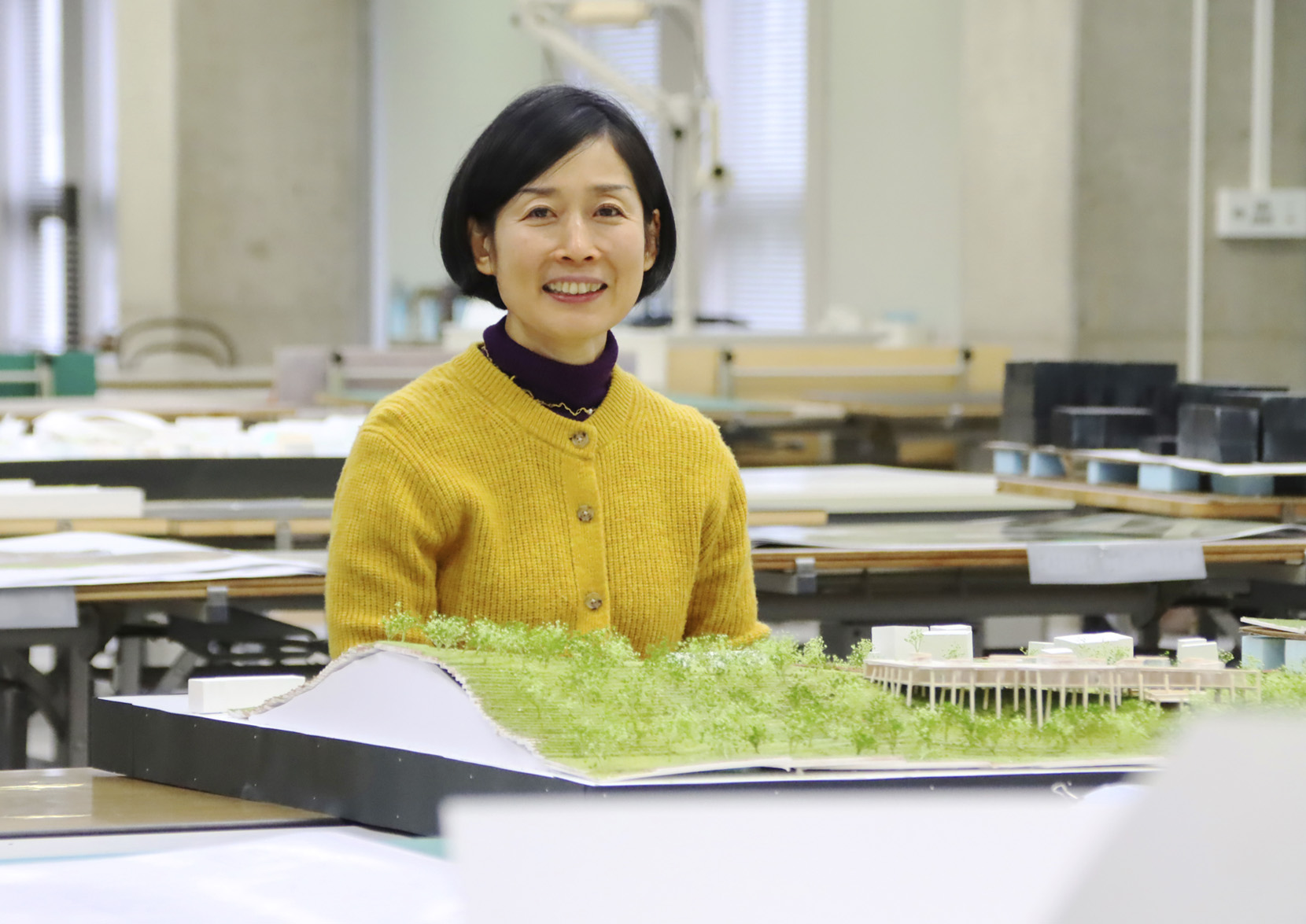Supporting art festivals throughout Japan from an architectural perspective
Profile
Associate Professor Aya Yamagishi was born in Miyagi Prefecture and graduated from the Waseda University doctoral program in Architecture, Graduate School of Creative Science and Engineering. After working for Hiroshi Hara + Atelier Phi Architects, she established the licensed architectural office, Cycle Architects. She joined Chubu University in 2022 and is involved in both design practice and teaching at the university. In recent years she has been involved in the architectural aspects of art festivals held in various parts of Japan.Associate Prof. Yamagishi’s hobbies include visiting exhibitions and theater. She recently visited the Tokyo Metropolitan Teien Art Museum (former residence of Prince Asaka built in 1933, opened as an art museum in 1983), which exhibits artists’ works in a beautiful Art Deco style space. It is a spot she recommends to students of architecture and related fields. Her favorite food is Tosa Buntan.
Close Up with Associate Prof. Yamagishi!
Research Interest
In recent years, a wide variety of art festivals have been held throughout Japan. These festivals are not confined to museums; instead, artworks are often displayed in renovated spaces such as vacant stores, empty houses, and former school buildings that are no longer in use, creating unique environments that resonate with each piece. Dozens or even hundreds of artworks are scattered throughout towns and regions, inviting people to explore places they may never have visited before. Moving from site to site, visitors discover the area’s beautiful scenery, savor the local flavors, and enjoy meaningful interactions with the people who live there. I am involved in the spatial design and architecture of these art festivals, allowing people to rediscover the charms of various regions of Japan.
In the nearby area, I have been involved in the Aichi Triennale, which has been held every three years for more than 10 years. For the Aichi Triennale 2019, I was involved in the design of artist Tadasu Takamine’s work. I was very impressed by this bold work, in which the bottom of an abandoned school swimming pool was cut into a rectangle 12 meters long and 6 meters wide and stood vertically. The Aichi Triennale 2025 will open in September this year, and I am currently preparing for the Seto venue of the festival.
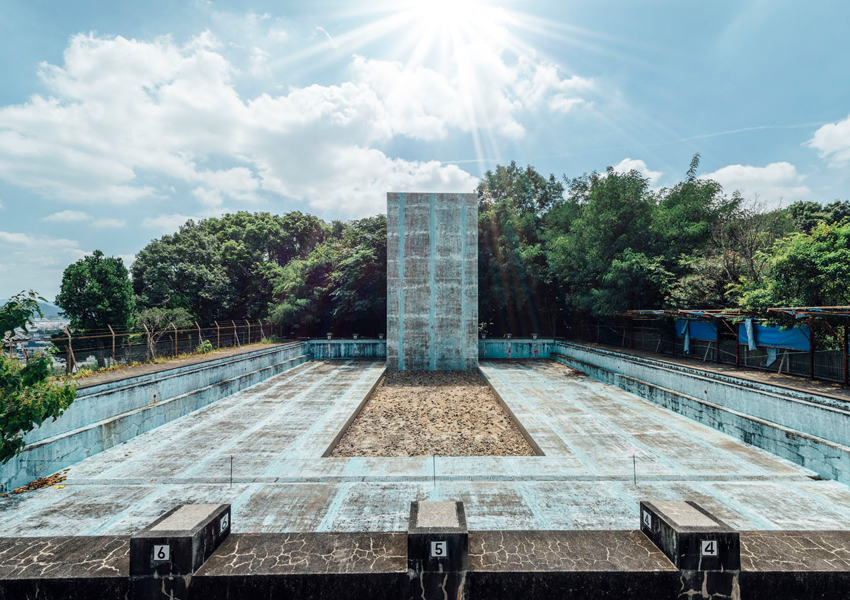
Installation view at Aichi Triennale 2019
Tadasu Takamine, Anti-thesis: Gazing up at the endless blue// stained forever by its color //I have ceased to be myself, 2019
Photo: Takeshi Hirabayashi
The floor of a former high school swimming pool was cut out and stood vertically.
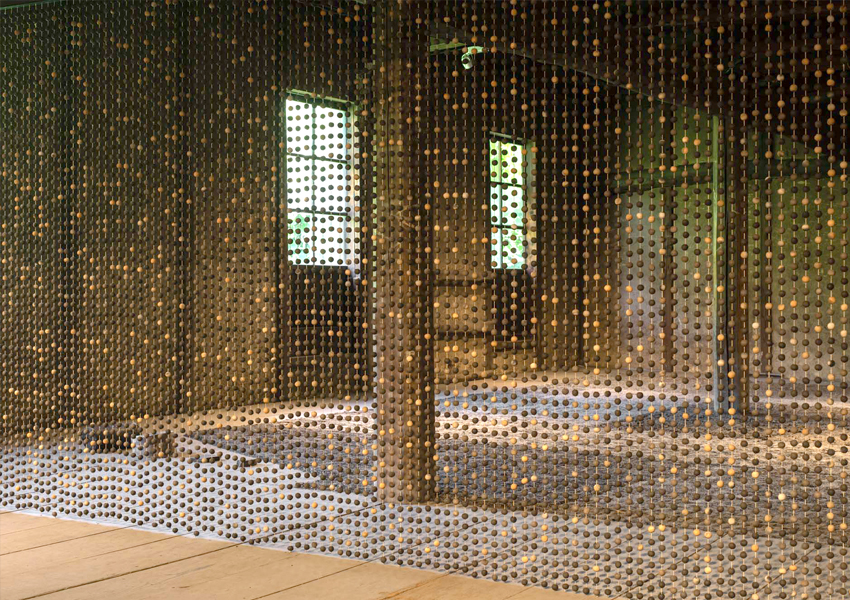
Installation view at Aichi Triennale 2022
Florencia Sadir, Lluvia de barro /Rain of mud, 2021©︎ Aichi Triennale Organizing Committee
Photo: ToLoLo Studio
The exhibition was held at a former pottery factory in Tokoname.
How did you start your research?
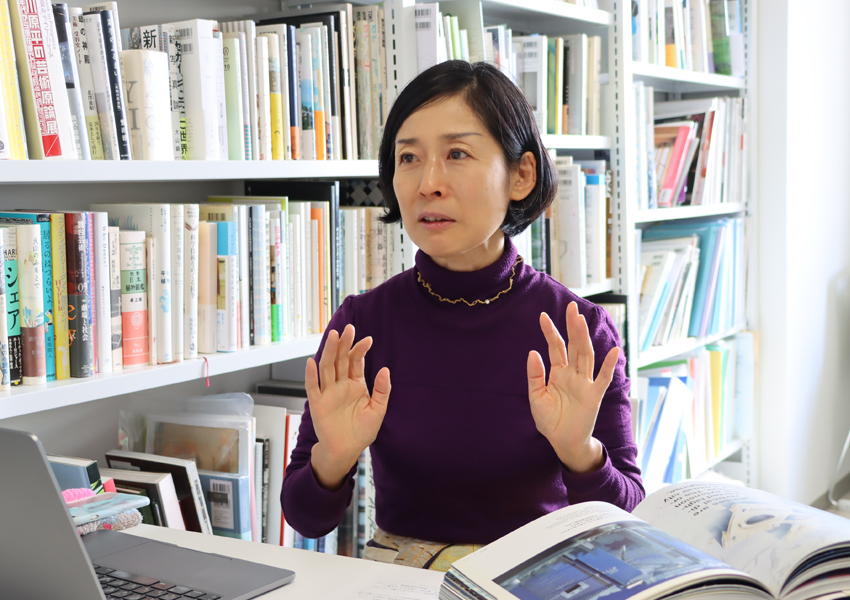
When I was in elementary school, a good friend of my parents who was an architect designed my parents’ house, and that’s how I learned about this job. Since then, I dreamed of becoming an architect, and after studying at university and graduate school and completing my doctoral studies, I worked for architect Hiroshi Hara. While at Hara’s office, I was fortunate to be involved in many projects, from large-scale buildings such as Kyoto Station and Daiwa House Premist Dome (Sapporo Dome), to residential architecture, which gave me a lot of valuable experience. Although working under Hara, who was very much a night person and often worked late into the night, was sometimes quite demanding, his passing in January 2025 left me deeply saddened, as I can no longer see him in person.
After becoming independent, I was approached by art director Fram Kitagawa, with whom Hara had collaborated on many projects, and that is how I became involved in art festivals throughout Japan.
The conversion of an abandoned school building
For the Echigo-Tsumari Art Triennale, held in Tsunan-cho, Tokamachi City, Niigata Prefecture, I was commissioned by children’s book author and artist Seizo Tashima to create a “spatial picture book,” and as a result, we designed the “Hachi & Seizo Tashima Museum of Picture Book Art” (opened in 2009). The museum is a converted former elementary school and is a free and playful space, with classrooms connected only by the blackboards that remain, and plants growing up from the first floor and penetrating to the second floor through holes in the ceiling. The museum has remained open* even after the end of the Art Festival, and it maintains a unique connection with members of the local Hachi community in Tokamachi City. Community members help out at the reception desk and the adjoining café, tend to the garden, and take care of the resident goats. During the Art Festival 2024, I visited the museum with my students.
・Closed in winter and on certain days
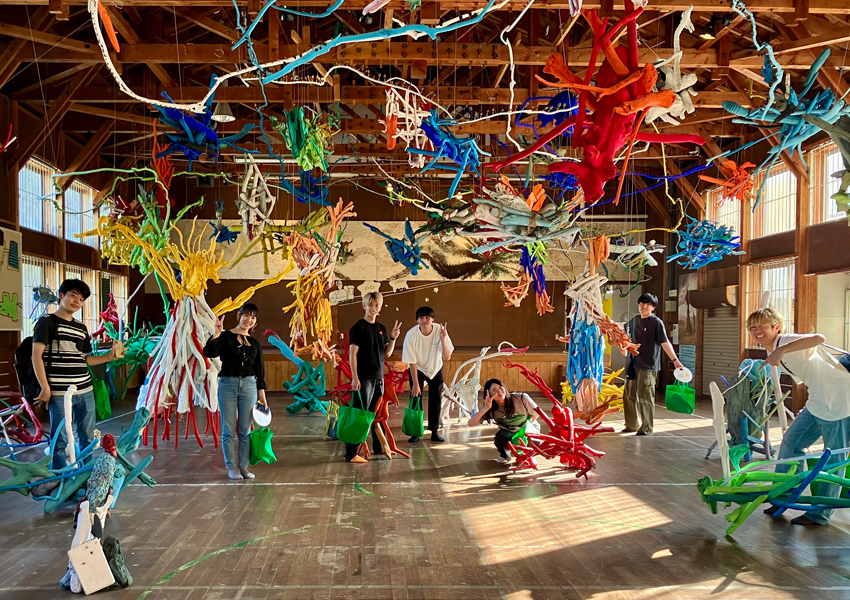
Activities in Ishikawa Following the Noto Peninsula Earthquake
Since 2020, I have also been involved in the Oku-Noto Triennale in Suzu City, located at the tip of the Noto Peninsula in Ishikawa Prefecture. Under the title “Okura Zarae,” we designed an unprecedented theatrical folk museum, the “Suzu Theater Museum” (opened in 2021*), in which traditional tools (fishing and farming tools, vessels, festival props, etc.) were collected from households and turned into works of contemporary art. This museum is located in an abondonded gymnasium that was converted.
In addition, in response to the Noto Peninsula earthquake and heavy rain in 2024, we started the “Tategu Zarae” project in Suzu City, in which volunteers collect architectural fittings (wooden doors, shoji screens, sliding doors, glass doors, etc.) from homes that are set to be demolished. These fittings are too beautiful to be lost in the demolition work, and by collecting and reusing them in new homes and meeting halls, we hope to preserve even a small number of these valuable cultural assets for future generations.
・Currently closed due to the Noto Peninsula earthquake in 2024.
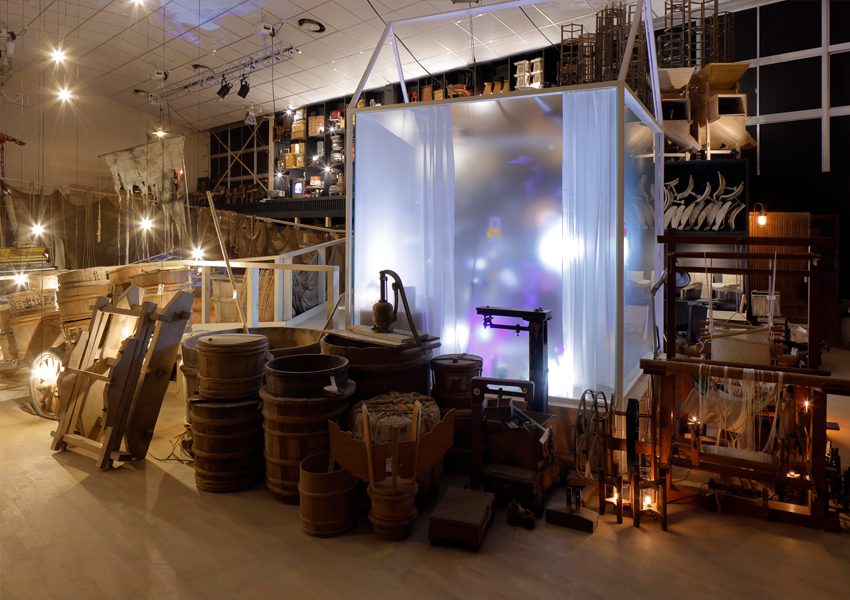
Oku-Noto Triennale 2020+
Suzu Theatre Museum:The Ark of Light exhibition view
Photo: Keizo Kioku
A new theatrical folk museum that displays folk tools and utensils from everyday life that have been collected from the citizens of Suzu City and transformed into works of contemporary art.
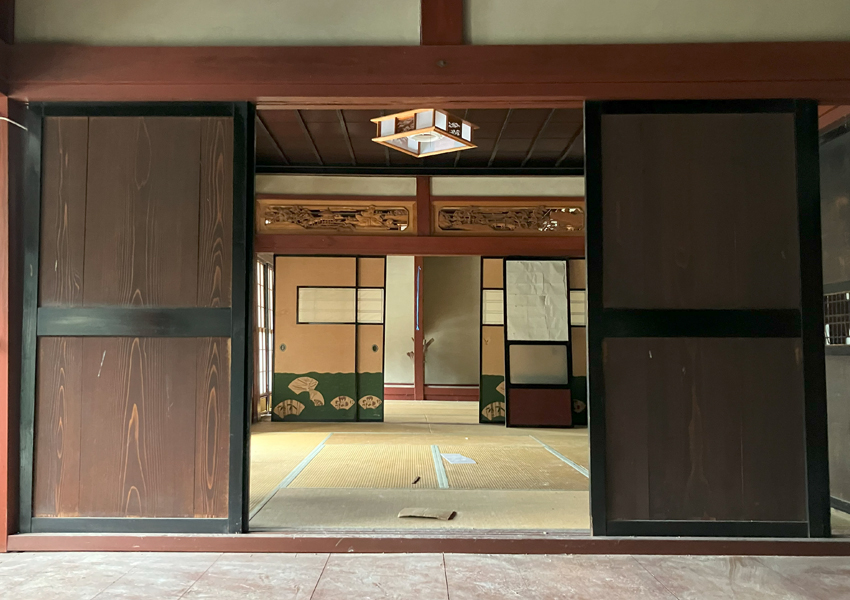
”Tategu Zarae” project
Beautiful fixtures and transoms in a private house scheduled for demolition.
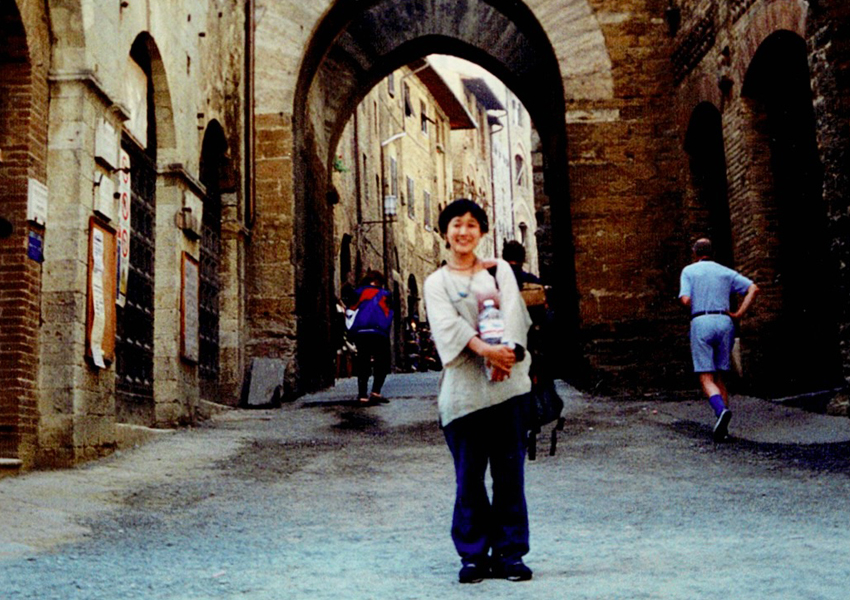
Student Life
When I was in college, I was a member of a theater club and worked behind the scenes making large and small props for the stage. I remember I was very busy balancing my academic work and club activities. My former mentor, Professor Nobuaki Furuya, also loved the stage and took me to see the open-air theater in Toga Art Park in Toyama Prefecture, designed by Arata Isozaki. At the time, I never dreamed that I would someday be a university faculty member myself, but what I learned under Prof. Furuya, an architect who was active in real-world design activities while also teaching at a university, has been put to good use. I am grateful to have met him.
Message
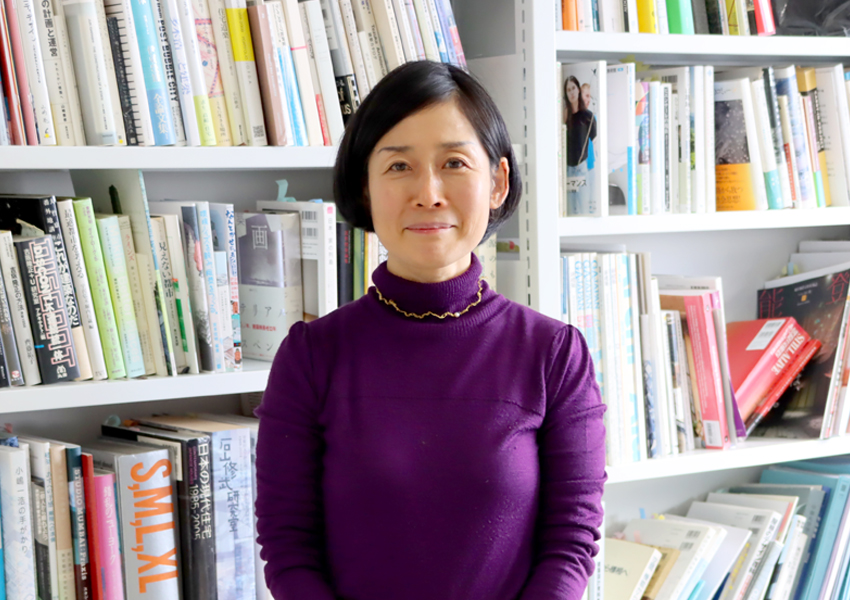
While you are a student and can use your time freely, you should take trips to places you have never been before and visit architectural structures that interest you. Try to enjoy not only seeing the architecture, but also taking in the local scenery, tasting local delicacies, and meeting the local people. In the future, you will be able to draw much from your experiences. The field of architecture is interesting in that there is always more than one answer, so I hope you will cultivate a multifaceted mindset.


